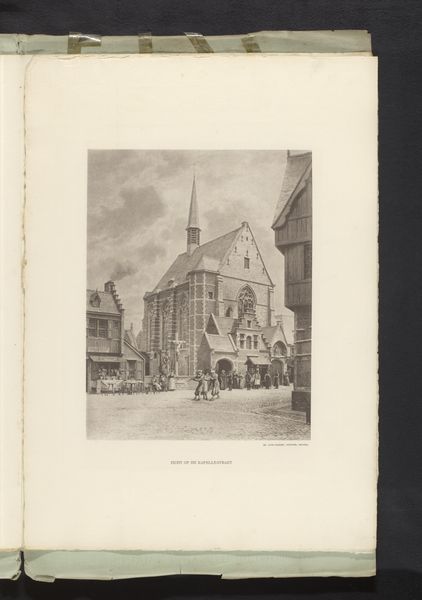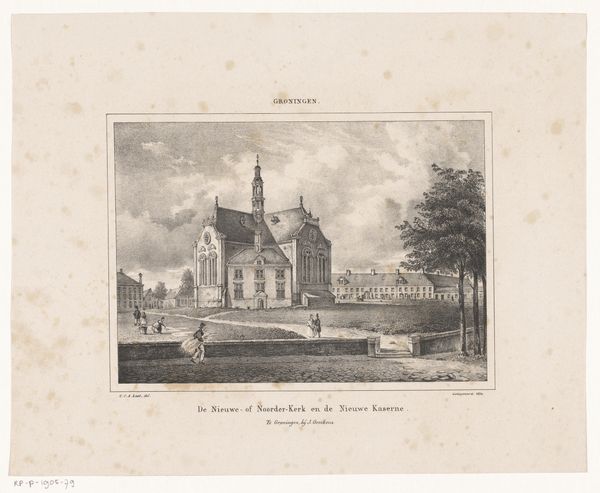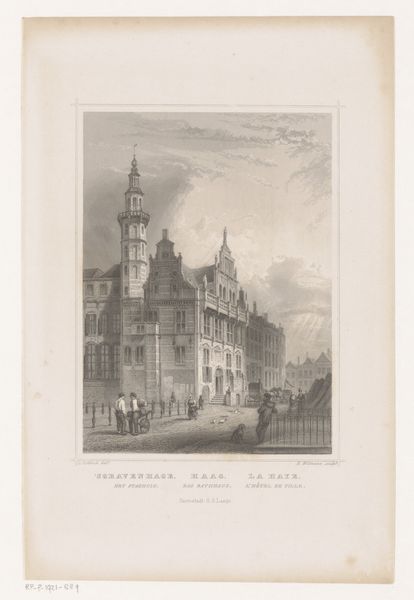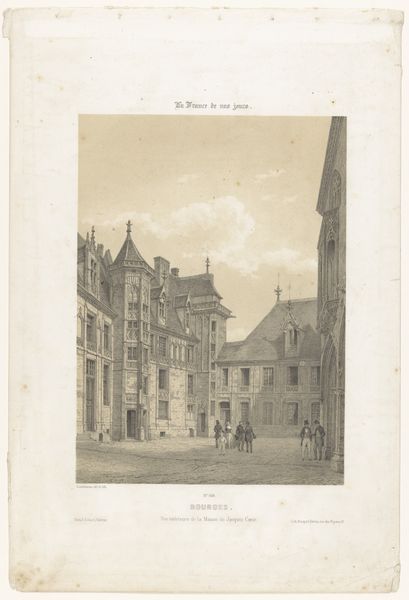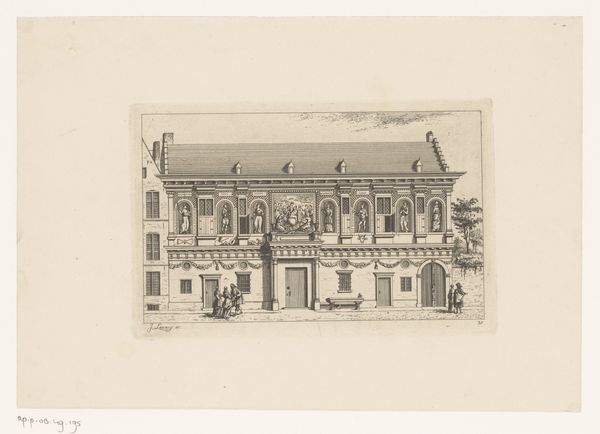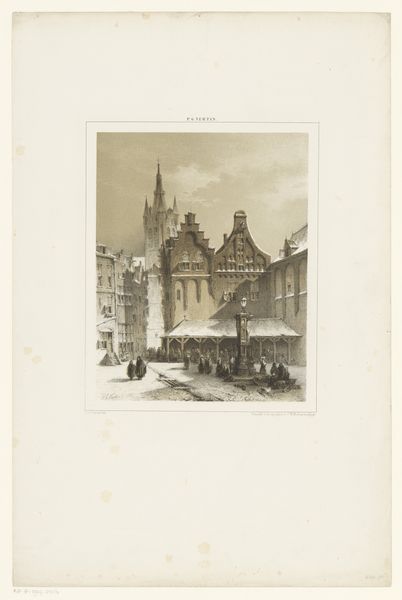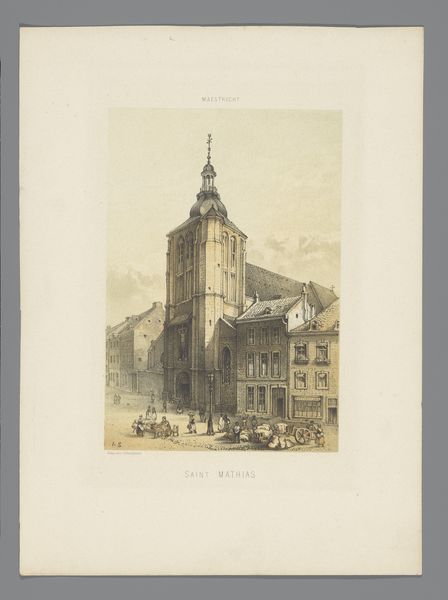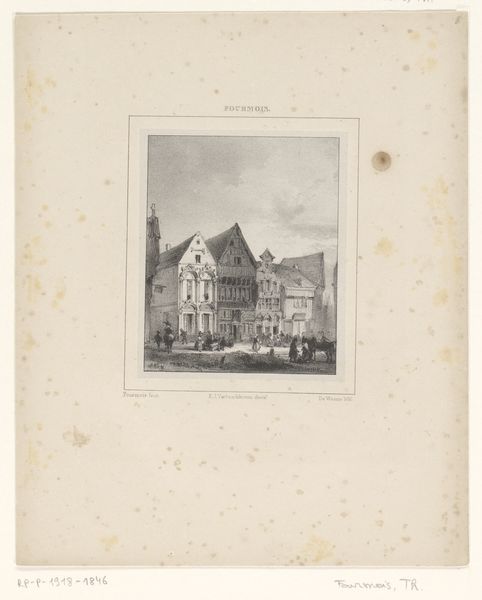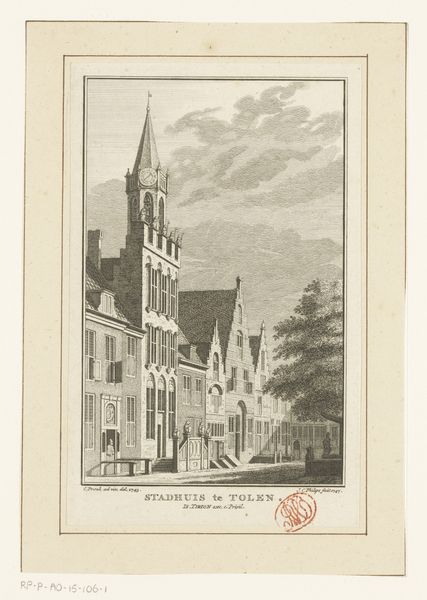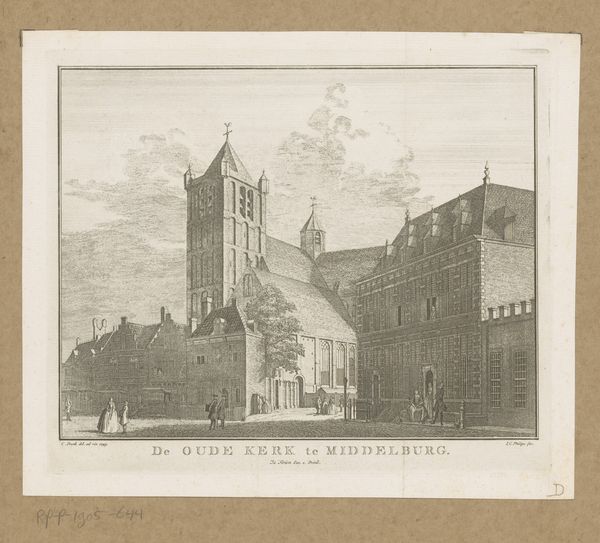
drawing, print, watercolor
#
drawing
# print
#
landscape
#
watercolor
#
cityscape
#
watercolour illustration
#
watercolor
#
realism
Dimensions: height 328 mm, width 244 mm
Copyright: Rijks Museum: Open Domain
Editor: This is Alexander Schaepkens’ “Augustijnenkerk te Maastricht,” a watercolor from 1857, housed at the Rijksmuseum. I'm struck by its serene quality. It's almost photorealistic but softened somehow by the watercolor. How do you interpret this work? Curator: Ah, Schaepkens. He had a quiet talent for capturing the soul of a place, didn't he? This watercolor whispers rather than shouts, doesn't it? I think he was interested in documenting, in a way that felt true to his experience of the city. Notice the everyday life bustling about, figures on the bridge, the hint of industry… It makes the spiritual presence of the church all the more profound. It's not just a building, is it? It's a living part of the urban tapestry. What do you think makes it feel 'softened' to you? Editor: Maybe the colour palette? There is something inherently gentle about how watercolour blends the light and shadows. It seems softer compared to oils or even print. Curator: Exactly! It has a luminous quality. The print aspect almost feels like an underpainting to give the buildings' structures more rigid form, right? And that soft focus lends the work a nostalgic air. This wasn't just observation. Schaepkens filtered it through his own artistic sensibility. Editor: It makes me want to see Maastricht as it was then. Thanks for illuminating it! Curator: And thank you for lending fresh eyes to an old view. These cityscapes can teach us a lot about perspective, both visual and temporal.
Comments
No comments
Be the first to comment and join the conversation on the ultimate creative platform.
